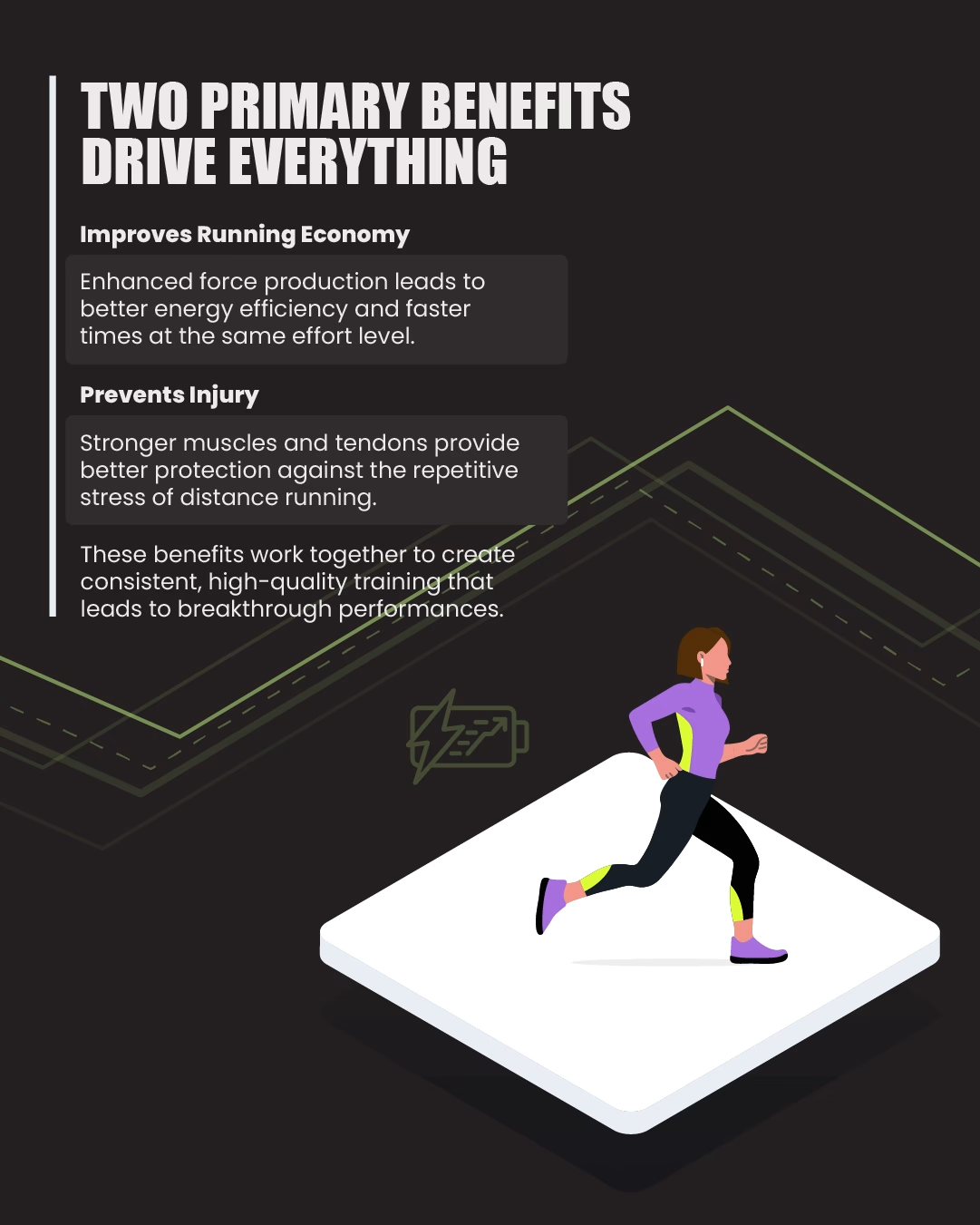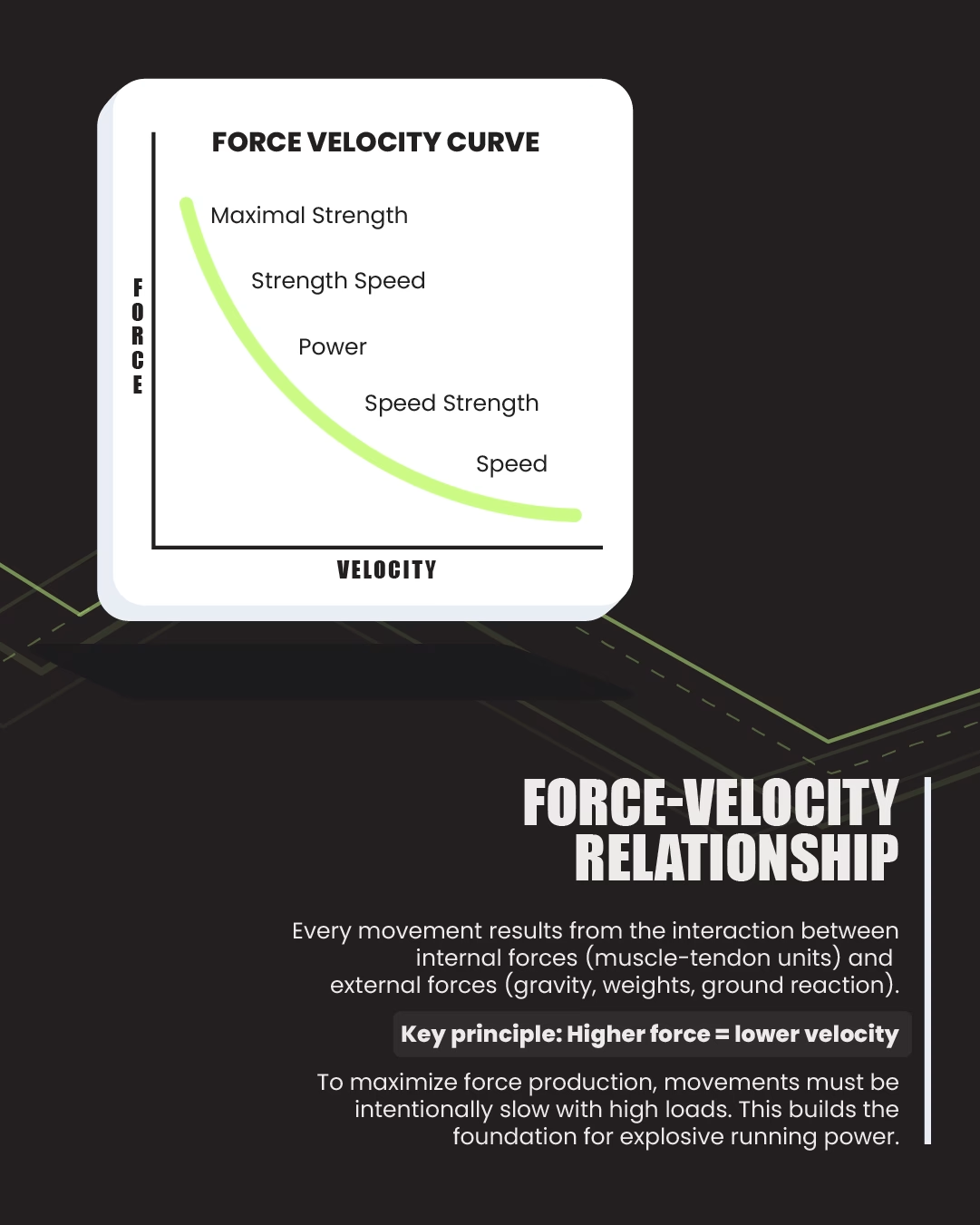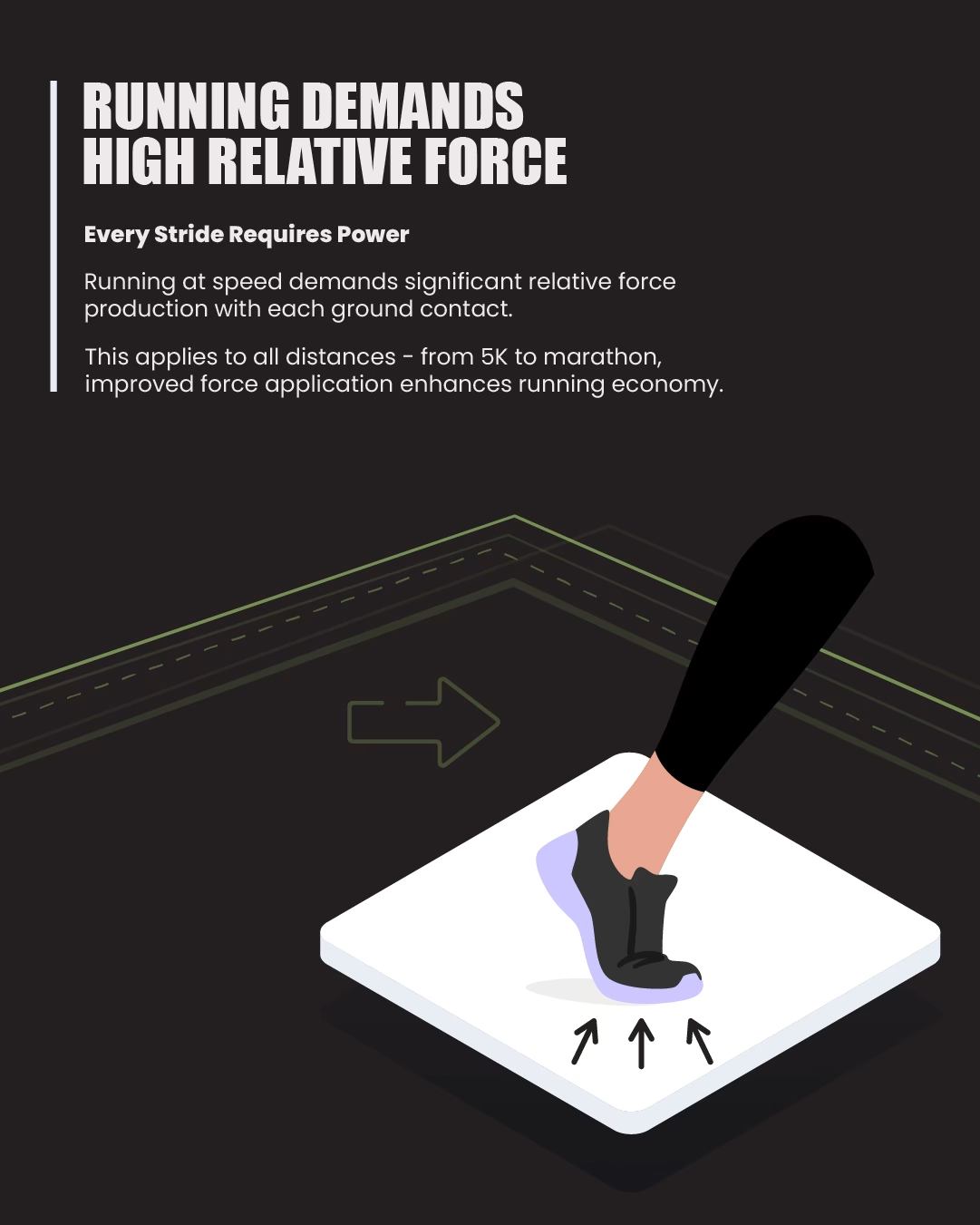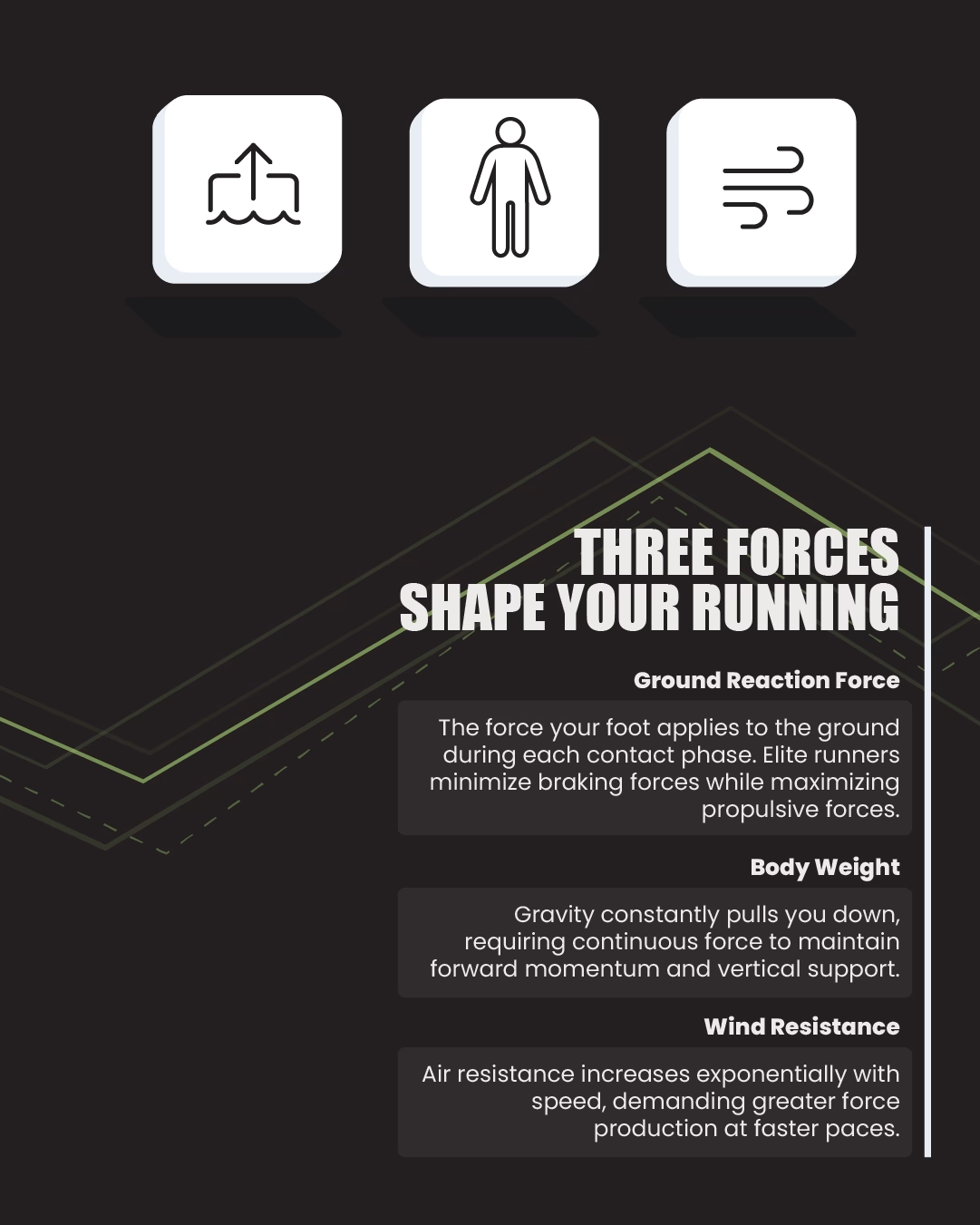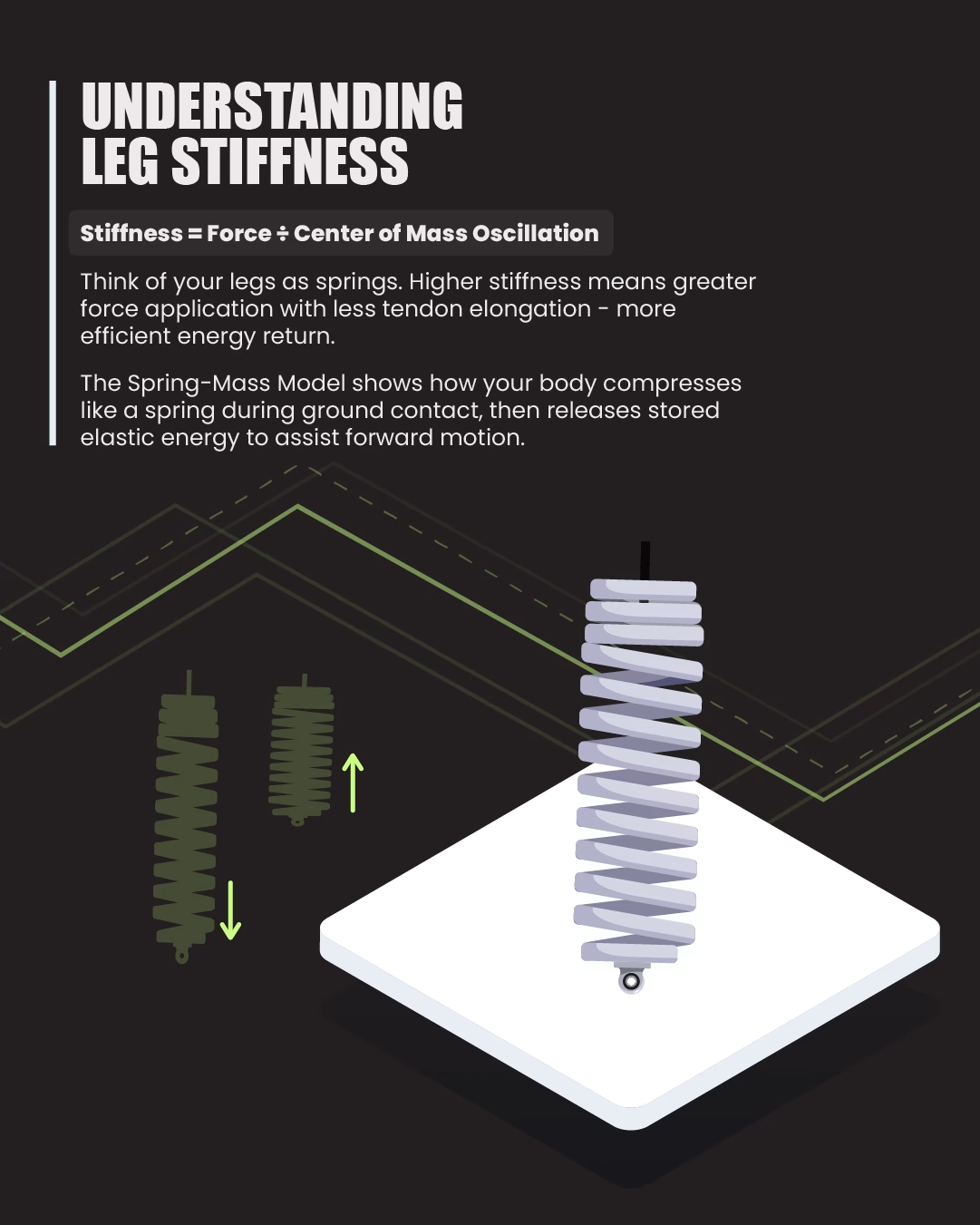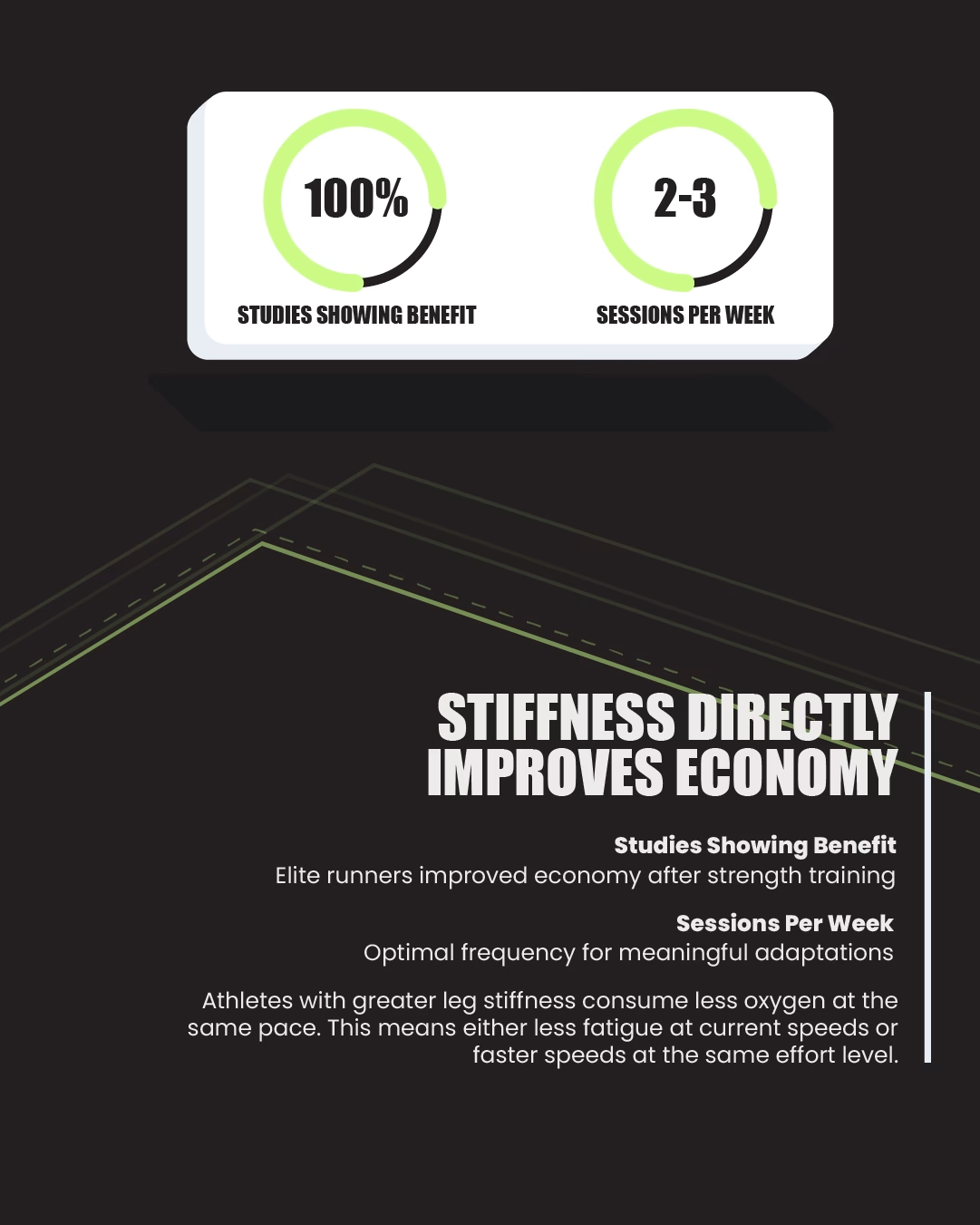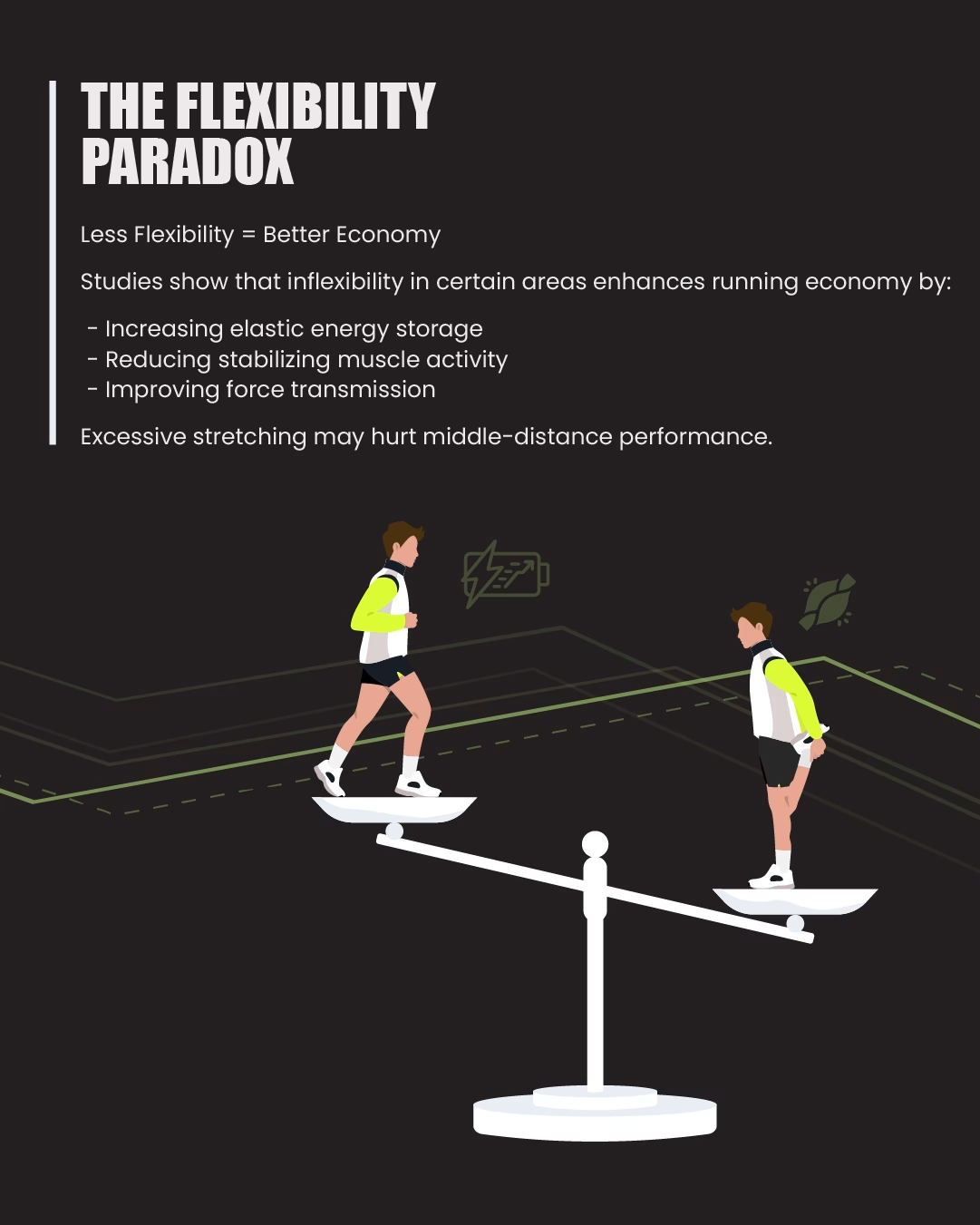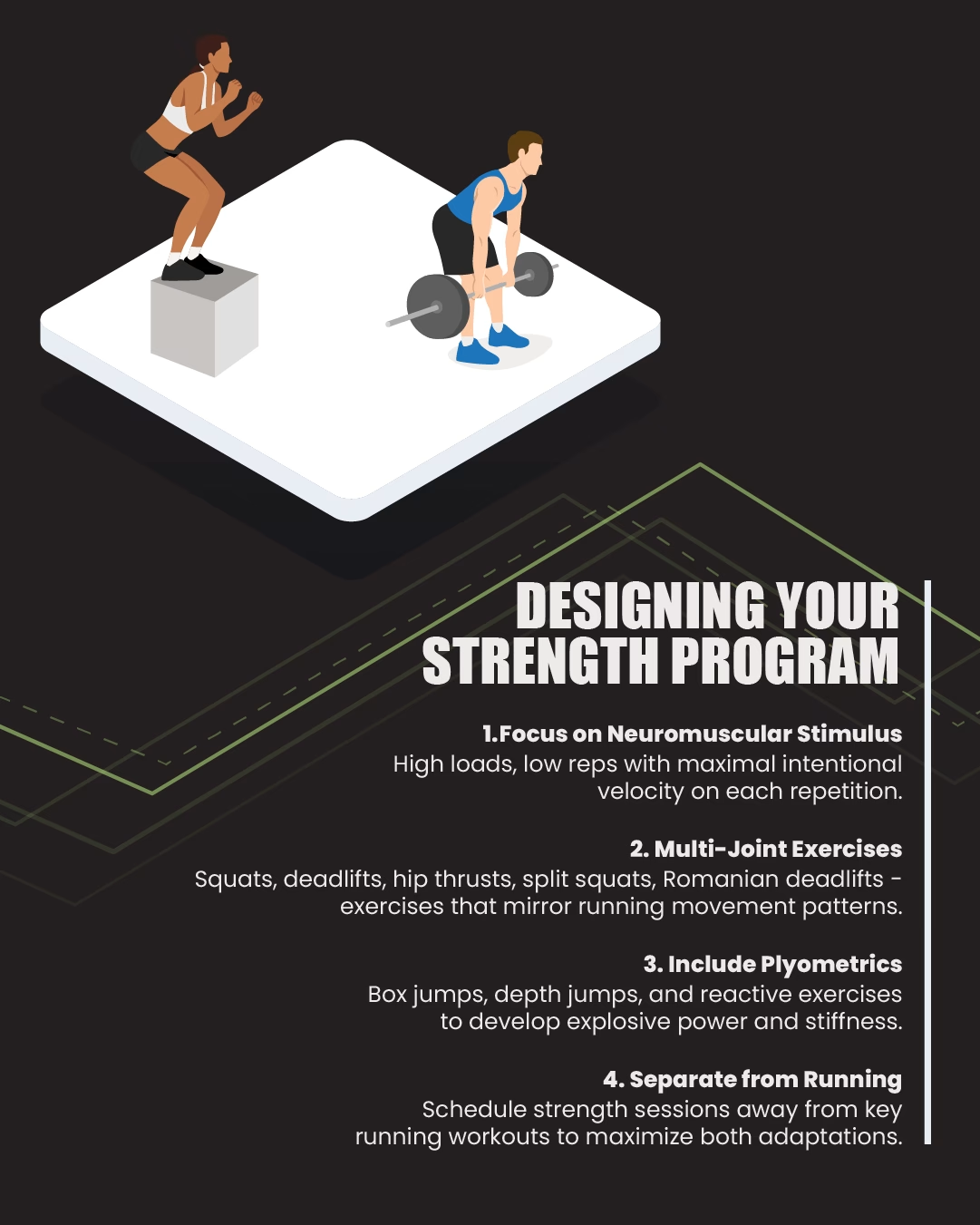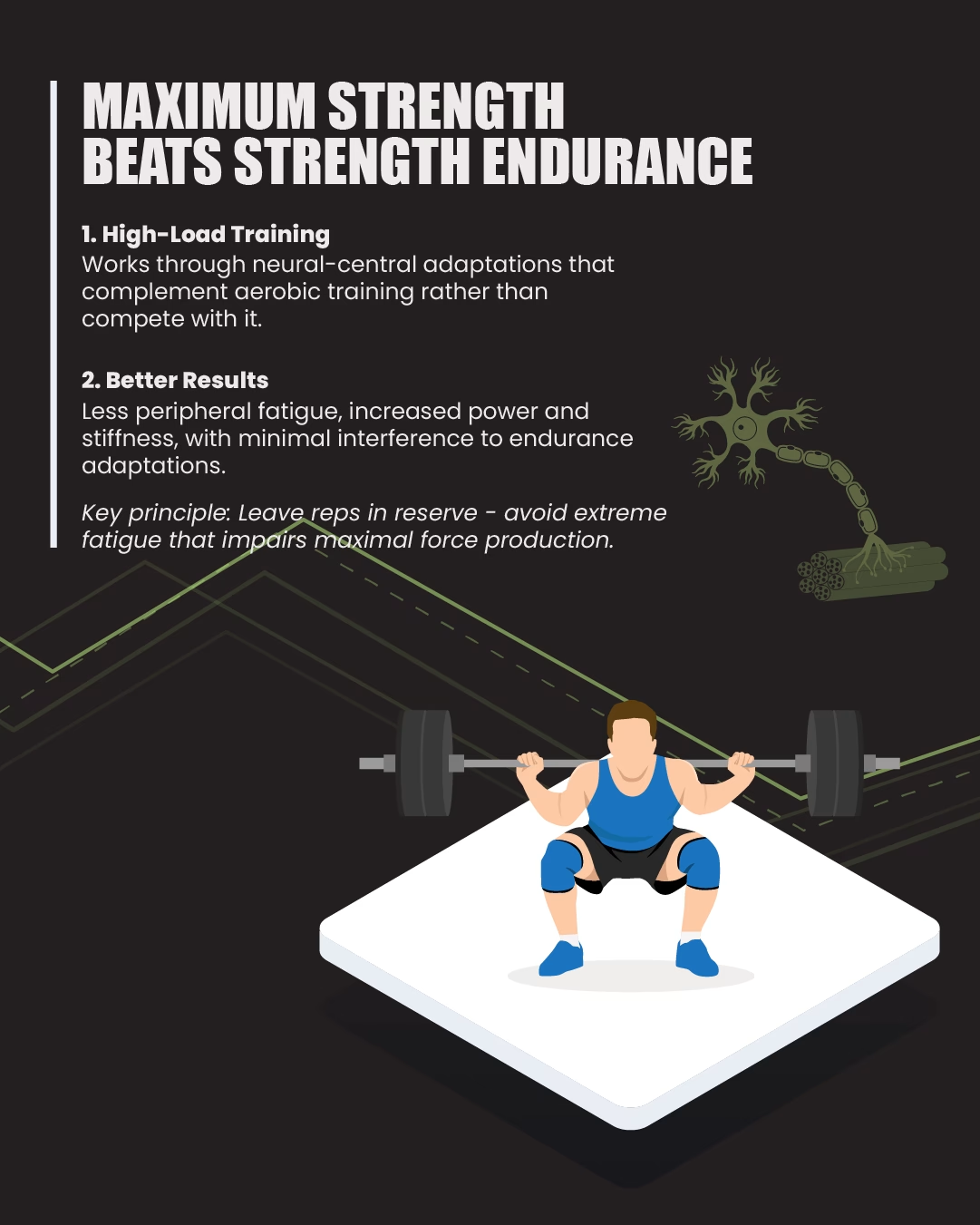Why Distance Runners Need Strength Training
Carlos Balsalobre-Fernandez shared his experience at the European Athletics High Performance Webinar series. His talk breaks down why endurance athletes can’t afford to skip the weight room. Here are the big takeaways.
Key Insights
Improves Running Economy
Strength training enhances how efficiently you use oxygen. Runners with stiffer tendons and stronger muscles consume less O₂ at the same speed — meaning either less fatigue at your current pace or more speed for the same effort.
Prevents Injuries
Consistency is everything in running. Stronger muscles, tendons, and connective tissue lower the risk of injury, letting you stack more quality training weeks.
It’s All About Force
Every stride is a battle between internal muscle force and external forces (gravity, ground reaction, wind resistance). To run faster, you need to apply more force in less time. Heavy, slow lifts (like squats, deadlifts, and lunges) target this ability by maximizing force production.
Stiffness = Efficiency
Think of your legs as springs. The stiffer they are, the more elastic energy they return each step. Higher stiffness = better running economy.
What the Research Says
A meta-analysis of controlled trials showed 100% of studies found strength training improved running economy in elite runners — but only with:
- 2–3 sessions per week
- Moderate to heavy loads
- Multi-joint lifts, sprints, and plyometrics
Notably, “strength endurance” work (light weights, high reps) interferes with endurance training. In contrast, high-load, low-rep training improves power and stiffness without compromising aerobic adaptations.
Practical Guidelines
- Focus on heavy, multi-joint lifts: squats, deadlifts, hip thrusts, lunges
- Include plyometrics (box jumps, drop jumps) for explosive strength
- Train with low reps, high intent, and leave some reps “in reserve” (avoid going to failure)
- Aim for 2–3 sessions/week, ideally separate from your run sessions
Why It Matters
Strength training isn’t about “bulking up.” For runners, it’s about becoming more economical, resilient, and faster. In short: lift heavy, run better.
Sources & Further Reading
Effects of Strength Training on Running Economy in Highly Trained Runners.Journal of Strength & Conditioning Research, 2016.

